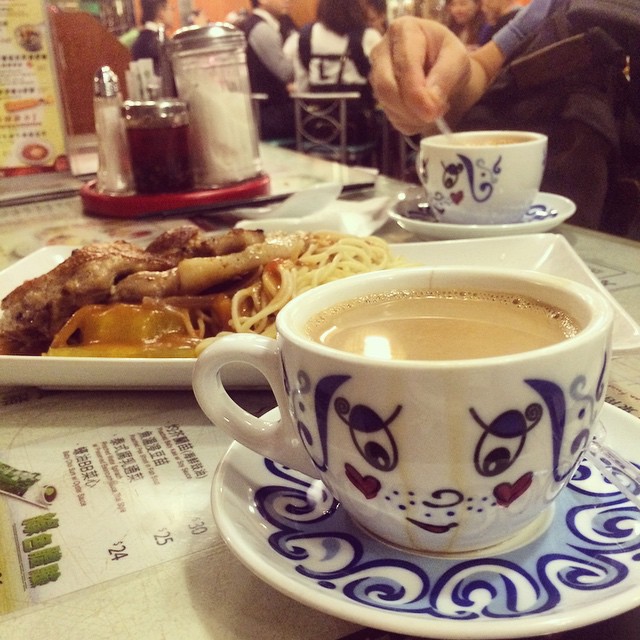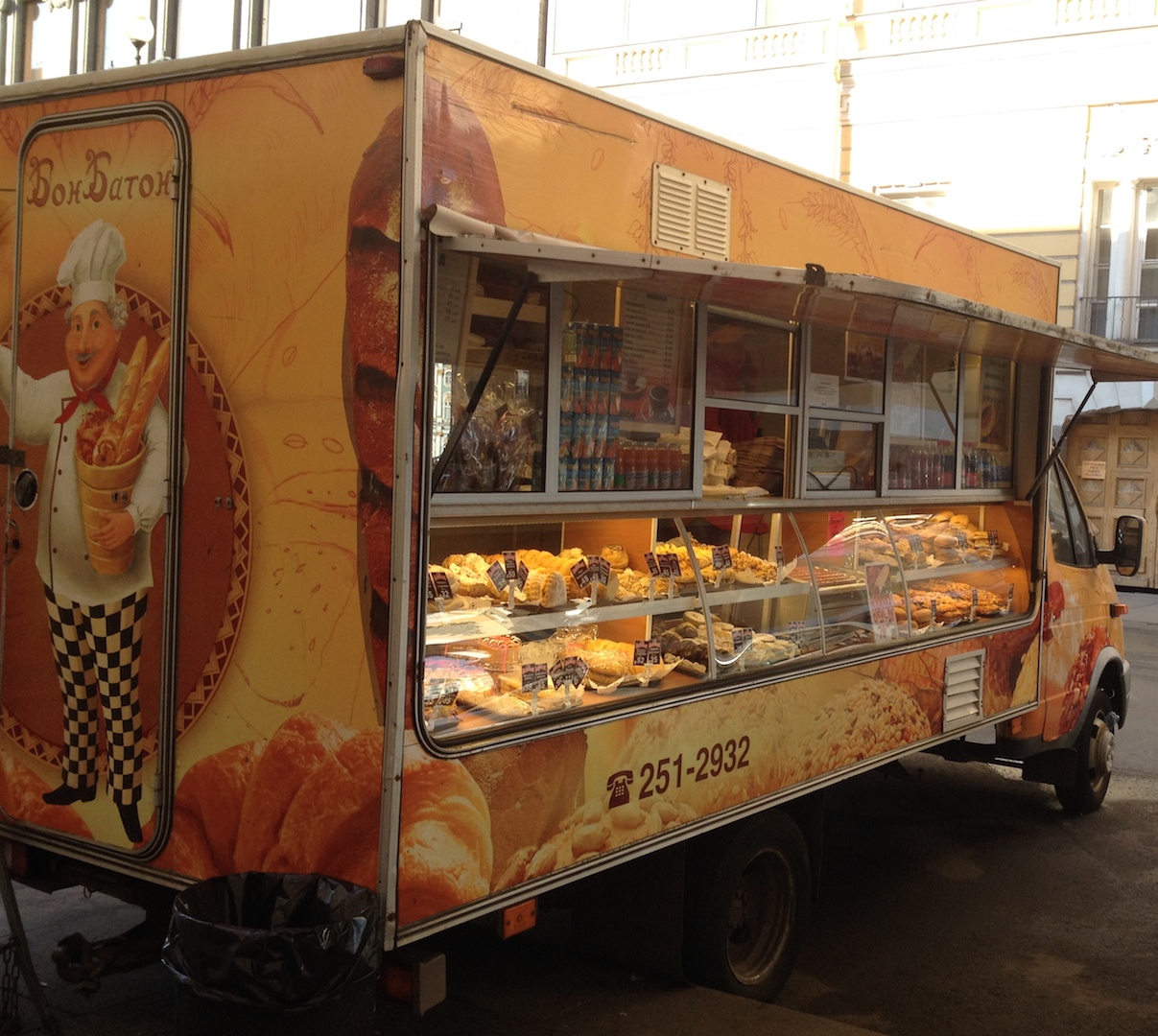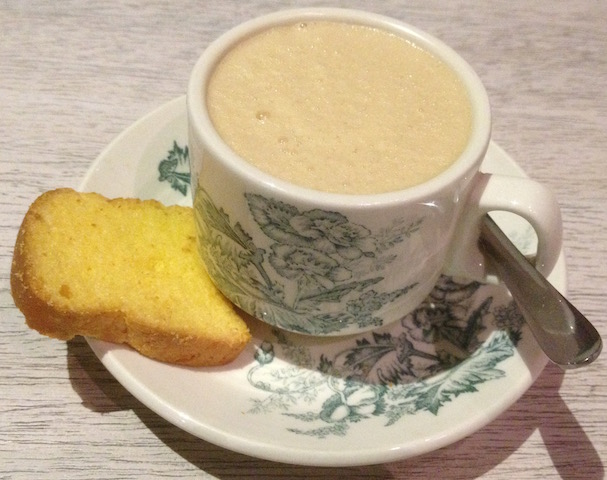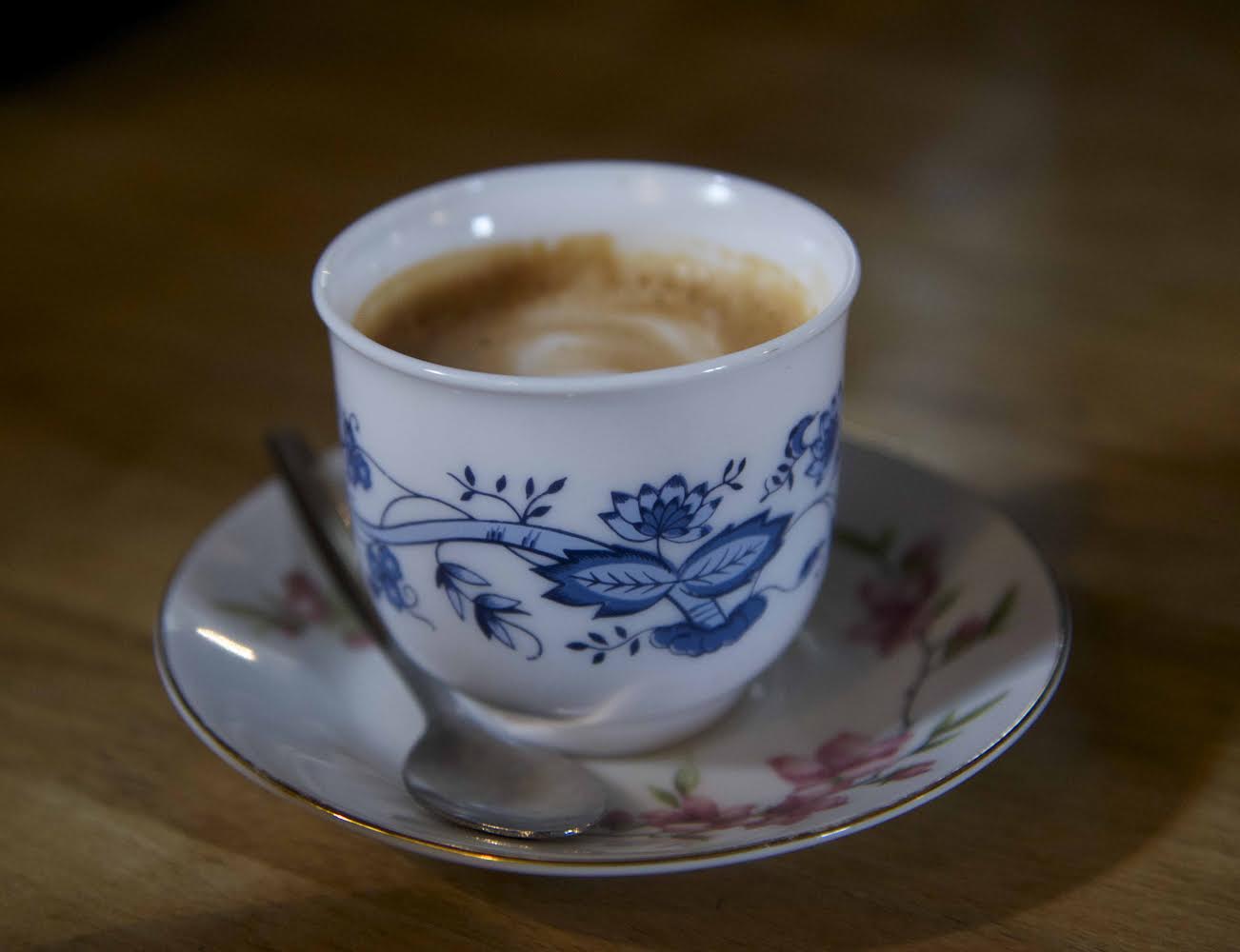
The secret to exceptional service from a barista is to speak his or her language. Imagine going to coffee shop in Shanghai, China and asking for “咖啡” (kafei) or saying “我想要一杯咖啡” (translation: I would like a cup of coffee) instead of “one coffee, please!”
No matter which country you visit, speaking the locals’ language, like when you saying “coffee” in the barista’s or server’s native language, will make them happy.
Coffee is a universal drink, a drink to savor with friends and family. It appears that there isn’t a huge difference in the word coffee no matter what language you speak – the word ‘coffee’ sounds almost the same in every language.
Here’s how to say coffee in different languages.
How to Say Coffee in the World’s Most Spoken Languages
Here’s how to say coffee in some of the most spoken languages in the world by number of native speakers.

1. Coffee in Chinese: 咖啡 (kafei)
Use this word for coffee in China, Taiwan, Chinatowns throughout the world, Singapore and Malaysia.
2. Coffee in Hindi: कॉफ़ी (kofee)
Hindi is spoken in the northern part of India, namely around Delhi, Himachal Pradesh, Rajasthan, Uttar Pradesh and Madhya Pradesh.
3. Coffee in French: café
The French press is said to have originated in France. But some say it was actually in Italy since it was patented by an Italian designer. Today, it’s a popular method all over the world to brew café.
4. Coffee in Spanish: café
Spanish is spoken all over the world – Spain, Central America, most of South America and even Africa, in Equatorial Guinea. It’s easy to remember the word for coffee as it’s similar to French and another name for a coffee shop (cafe.)
5. Coffee in Japanese: コー ヒー (kohi)
The Japanese are the inventors of ceramic coffee drippers and the pour-over coffee equipment for hot and cold coffee. When in Japan simply say コーヒーしてください (coffee please).
6. Coffee in Korean : 커피 (kapi)
Koreans drink a lot of coffee. In Seoul, there are over 280 Starbucks locations. There are hundreds of Pascucci, an Italian coffee chain too and Korean chains like Hollys, Cafe Bene, Tous le Jours and Drop Top.
7. Coffee in Bengali: কফি (kaphi)
Bengali is one of the world’s most spoken languages with over 260 million native speakers.
8. Coffee in Vietnamese: cà phê
The Vietnamese arguably makes the best iced coffee in the world. They are also known to have strong and sweet coffee. You can find variations of coffee including egg coffee in Vietnam.
9. Coffee in Arabic: قهوة (qahwah)
The word coffee originates from the Arabic word qahwah. The origin of coffee can be traced back to Ethiopia and the Arabian Peninsula. Even the best coffee bean in the world, Arabica is named after the Arabs. According to the BBC, the word qahwah, or qahwa, originally meant wine, and in Yemen coffee was used as an aid to concentration and spiritual intoxication when they chanted the name of God. To learn more, go to BBC’s coffee and qahwa.
10. Coffee in Russian: кофе (kofe)
You can find coffee trucks selling coffee and pastries around St. Petersburg and Moscow. They are inexpensive and are some of the best place to practice your Russian while ordering кофе.

11. Coffee in Portuguese: café
Saying coffee in Portuguese is similar to Spanish. With over 230 million native Portuguese speaker, the language is not only spoken in Portugal and Brazil but also in parts of Asia and Africa.
More Ways to Say Coffee
12. Coffee in Italian: caffè
You may already know how to say coffee in Italian. And also several other coffee drinks in Italian too since the majority of the most popular coffee drinks like cappuccino, espresso, macchiato, americano and lungo are actually Italian words.
13. Coffee in German: kaffee
The Germans have a Kaffee and Kuchen tradition usually on Sundays between 3 to 5 pm. That’s when friends and family gather together for coffee and homemade cakes and cookies.
14. Coffee in Tamil: காபி (kafi)
Tamil is spoken in the southern region of India in the Tamil Nadu region. It is also widely spoken in Northeastern Sri Lanka and Indian communities throughout Singapore and Malaysia.
15. Coffee in Indonesian: kopi

“Kopi” is used in Indonesia, Malaysia, and Singapore. The Bahasa Indonesia (Indonesian language) is very similar to Bahasa Malaysia. Try saying “kopi-o” for local black coffee.
16. Coffee in Turkish: kahve
Turkish coffee (türk kahvesi in Turkish) is a brewing method that originated in Turkey. The coffee is made using a small pot called the cezve.
17. Coffee in Icelandic: Kaffi
Icelanders have a few coffee drinking habits and superstitions according to Nordic Culture Coffee Blog. Here was our coffee served in a mismatched cup and saucer in Reykjavik. Mismatched cups and saucers according to the Icelandic superstitions can mean the guest will have an affair. Read about this superstitions and more.

18. Coffee in Danish: Kaffe
Just like everyone else, the Danes love gathering together with friends and family for a good cup of coffee and dessert. We like the elaborate coffee culture in South Jutland. To read more about it go to ScandiKitchen’s A very Danish coffee time in South Jutland.
19. Coffee in Swahili: kahawa
Swahili is spoken in Kenya, Tanzania, Uganda, Somalia, Rwanda and many other countries in Africa. Coffee was discovered in Ethiopia in the continent of Africa.
In Ethiopia, where coffee originates, the coffee berries are known as bun. Somehow it took on the word the Arabic word mix when it was made into a drink in Yemen in the 15th century.




Leave a Reply